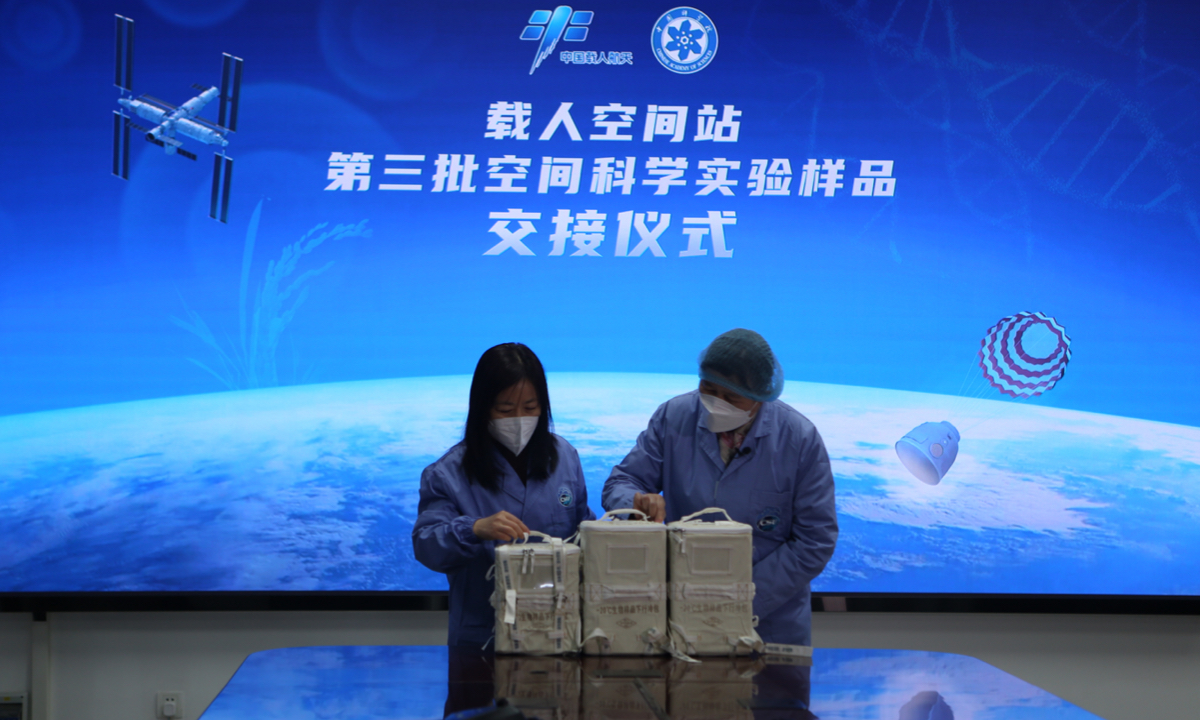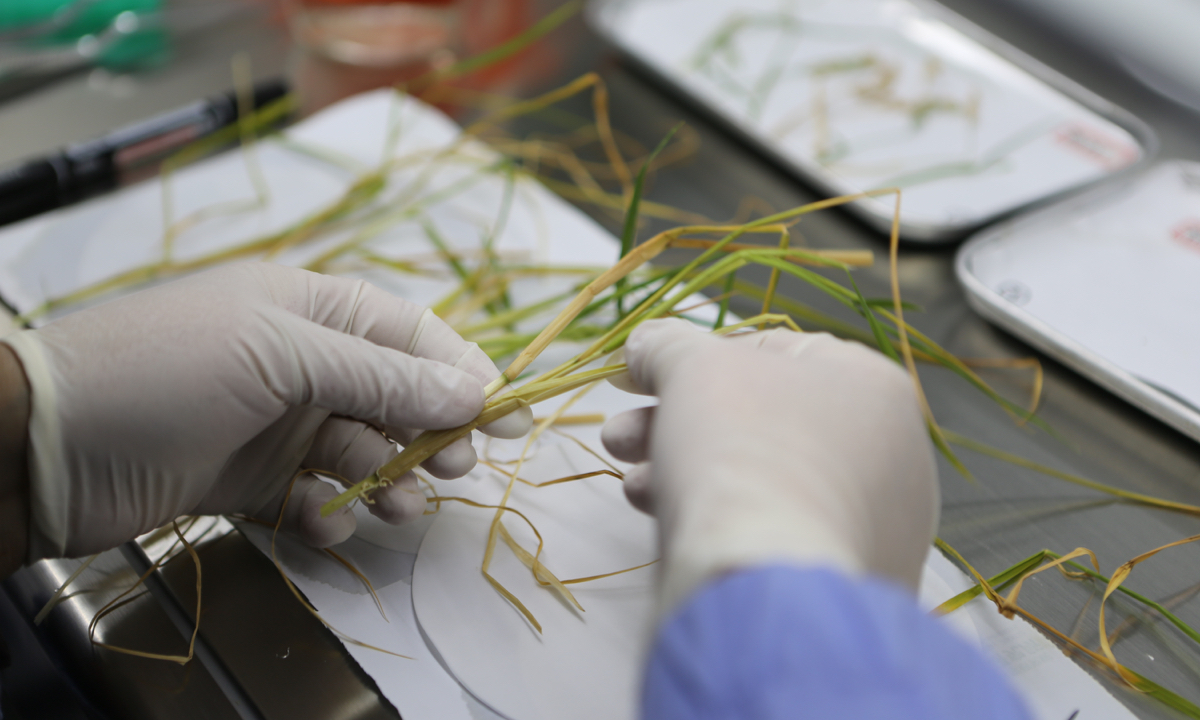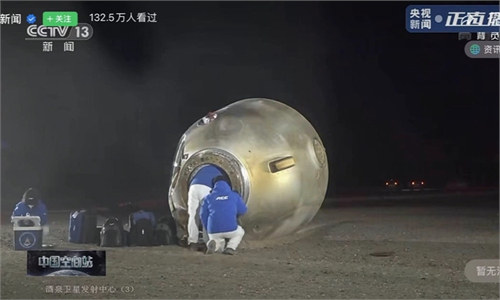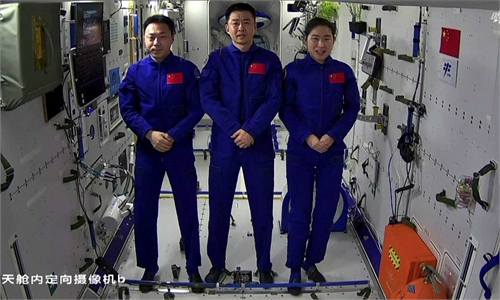World's first rice seeds harvested in orbit onboard China Space Station return to Earth

The third batch of space science experiment samples, including the world's first rice seedlings harvested in space, arrives with Shenzhou-14's return capsule on December 4, 2022. Photo: The Chinese Academy of Sciences

Researchers study the world’s first rice seedlings harvested in space that arrived with Shenzhou-14 crew’s return capsule on December 4, 2022. Photo: The Chinese Academy of Sciences
With the return of the Shenzhou-14 crew on Sunday night, the third batch of space science experiment samples that arrived with the return capsule were delivered to Beijing in the early hours of Monday, including the world's first rice seedlings harvested in space.
Experimental seeds of Arabidopsis thaliana, or thale cress, also grew vigorously in the space station. The two plants experienced 120 days of space cultivation, and completed the entire growth process from seed to seed.
Rice, the crop that feeds nearly half of the world's population, is considered to be a major candidate for the life support system in future manned deep-space exploration.
Thale cress is a winter annual with a relatively short life cycle, and it is a popular model organism in plant biology and genetics.
For human beings to survive in space for a long time, it is necessary to ensure that plants can complete the alternation of generations and successfully reproduce in space, experts said. Therefore, using space microgravity for rice breeding is one of the important directions of space botany research.
Previously, only thale cress, rape, peas and wheat had successfully grown from seed to seed in the space environment, but rice had not been able to complete the full growth cycle in such circumstances.
The experimental seeds of thale cress and rice were brought into space with the Wentian lab module in late July. The experiment was officially launched on July 29 with the nutrient injection and concluded on November 25, for a total of 120 days. During the process, thale cress and rice seeds sprouted, grew, flowered and bore seeds.
Preliminary results showed that rice plants became looser in space with larger leaf angles. Short-grain rice grew shorter while the height of tall-grain rice was not significantly affected.
In addition, the spiral upward movement of rice leaf growth controlled by the biological clock was more accentuated in space.
Researchers chose thale cress and rice to conduct the experiment because thale cress represents many kinds of vegetables, such as bok choy and oilseed rape, while rice represents many grain crops, such as wheat and corn, the Global Times learned from Zheng Huiqiong, a research fellow at the Chinese Academy of Sciences Center for Excellence in Molecular Plant Sciences, also the team leader of the program, on Monday.
"As the development of manned deep-space exploration strides forward, even eyeing a future landing on Mars, it is impossible to rely solely on food brought from the Earth to meet long-term space travel needs, so the problem of growing food in space must be solved," Zheng said.
He noted that as life on Earth cannot survive unprotected in the harsh conditions of space, future space crop production must be carried out in a completely sealed-off artificial environment. Therefore, space-grown crops must meet the requirements of high yield and quality, high efficiency and low energy consumption.
"Space breeding requires two conditions, one is microgravity and the other is cosmic ray irradiation that causes genetic mutation.Now with the platform for extravehicular experiments on the Mengtian lab module of China's space station, we can put our space breeding experimental payloads outside the cabin, and the results would be more valuable," Song Zhongping, a space observer and TV commentator, told the Global Times on Monday.
With the Shenzhou-15 crew's arrival, the China Space Station is now in a long-term manned application mode, allowing more kinds of plants to be bred and complete full-cycle growth, such as fruits and vegetables, Song noted.
Experts said China can also cooperate with other countries in this regard to secure greater food production, especially for those in Africa and Latin America with tight domestic food supplies.
China can help them to breed local crops and improve their yield, resistance to pests and diseases, and defensive capabilities through space breeding, which is also the country's way of shouldering its obligation as a responsible global power, they noted.


